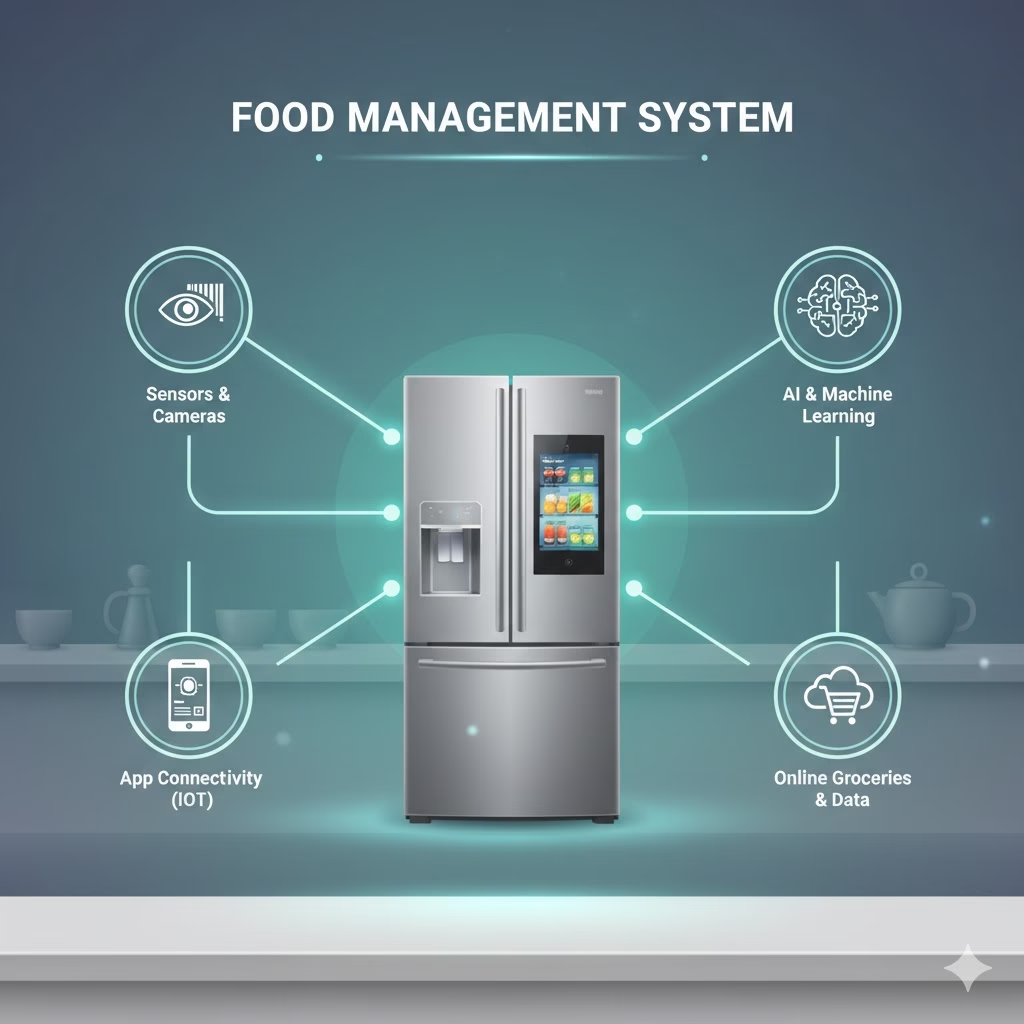
Tired of throwing away forgotten food or wondering what to cook for dinner? You’re not alone! This article is for anyone looking to make their kitchen smarter, their grocery budget stretch further, and their impact on the planet a little lighter. Join us as we explore practical steps to transform your food habits with the power of technology and a Food Management System.
The Food Management System: A New Era of Sustainable Kitchens
The kitchen is the heart of the home. But it also causes a big problem for the environment. Food waste is a huge global issue. It hurts the planet and costs us a lot of money. The Food and Agriculture Organization of the United Nations (FAO) says that about one-third of the food made for people is wasted. This is $1.3$ billion tons every year.
This waste isn’t just about food you don’t eat. It includes all the water, land, power, and work used to make that food. All of that effort is wasted too.
What if you could stop wasting so much food? What if you could shop better, save money, and eat healthier? Now, you can do this from home. The answer is the Food Management System (FMS). This new, smart method often uses AI to make your kitchen smarter. It gives you a total solution for tracking and using the food you buy.
This article will show you how to use an FMS effectively. It is a powerful tool. It helps you bring real sustainability into your daily life.
Why Our Old Way of Managing Food Doesn’t Work

Let’s look at the common mistakes we make now:
- Lost Food: Who hasn’t found old meat in the back of the freezer? Or dead greens in the crisper drawer? Without a good list, food is simply forgotten and goes bad.
- Too Much Shopping: We often buy things we already have. We buy more than we need because we forget what’s in the house. This leads to extra waste.
- Hard Meal Planning: It’s tough to match what you have with what you want to cook. This leads to unused items or last-minute, less eco-friendly food choices, like fast food.
- Missing Dates: You can’t track every expiration date. This means you often throw out food that is still good to eat.
- Wasting Power: Regular appliances don’t track what you have. They don’t know how to save power based on how you use them.
These bad habits cost us money. They also use up a lot of the earth’s natural resources.
What is a Food Management System?
A Food Management System (FMS) is a smart tool. It is built to track and manage all the food in your kitchen. This idea first started in large business kitchens. Now, it has moved into our homes. It works best when built into smart fridges and freezers.
These systems use several tools:
- Cameras and Sensors: These track when you add or take out items. They can sometimes tell what the item is.
- Artificial Intelligence (AI): The AI learns how much food you eat. It suggests recipes. And tracks dates. It helps manage your food list.
- Internet Connection (IoT): This links your appliance to your phone, your smart home, and even online grocery stores.
- Display Screen: This is often a screen on the fridge or an app on your phone. It shows you a picture of all the food you have.
The goal is simple: You get an accurate, live view of your food. You know what you have, where it is, and when you need to use it.

How an FMS Makes Your Life More Sustainable
An FMS is a powerful tool for sustainability. It gives you total control. This helps you make choices that are better for the planet and your budget.
1. Stopping Food Waste Completely
This is the biggest benefit. An FMS helps you waste less food.
- Live Food List: You never forget food again! Your FMS knows everything in your fridge and freezer. You can check the list on your phone while shopping. This stops you from buying things twice.
- Date Tracking: The system watches “best-by” and expiration dates. It sends you a warning when food is close to expiring. This reminds you to use the food, freeze it, or plan a meal around it.
- “Eat First” Ideas: The system can show you which items need to be used soon. It highlights them on the fridge screen or in the app.
- Better Portions: Knowing your full list helps you plan meals better. You stop making too much food. This means fewer leftovers that get thrown away later.
How to do it: Use the FMS app every day. Check your food list before you shop. When you get a warning about expiring food, quickly plan a meal with it. Use the “eat me first” ideas right away.
2. Smarter Shopping and Less Travel
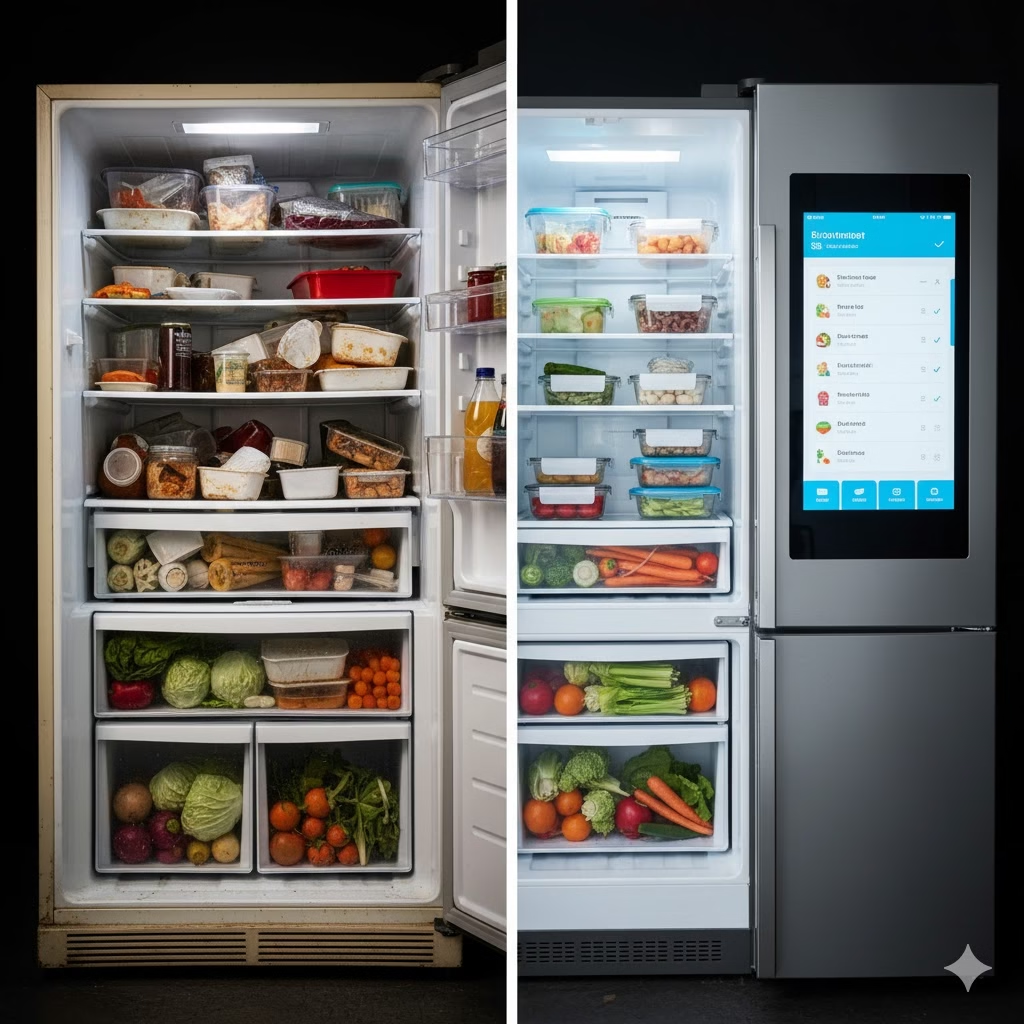
Better shopping habits also help the planet.
- Accurate Shopping Lists: Your FMS can write your grocery list for you. It lists what you have run out of. It can even suggest items for a recipe you want to try. This means fewer impulse buys.
- Fewer Store Trips: You know exactly what you need. This helps you do all your shopping at once. Fewer trips to the store means you use less gas and create fewer emissions.
- Eco-Friendly Choices: Knowing your food list frees up your mind. You can better focus on buying local or seasonal food when you shop.
How to do it: Link your FMS to your list app. Use the built-in list maker. Before you go out, compare your food list with your meal plan for the week.
3. Saving Power and Using Appliances Better
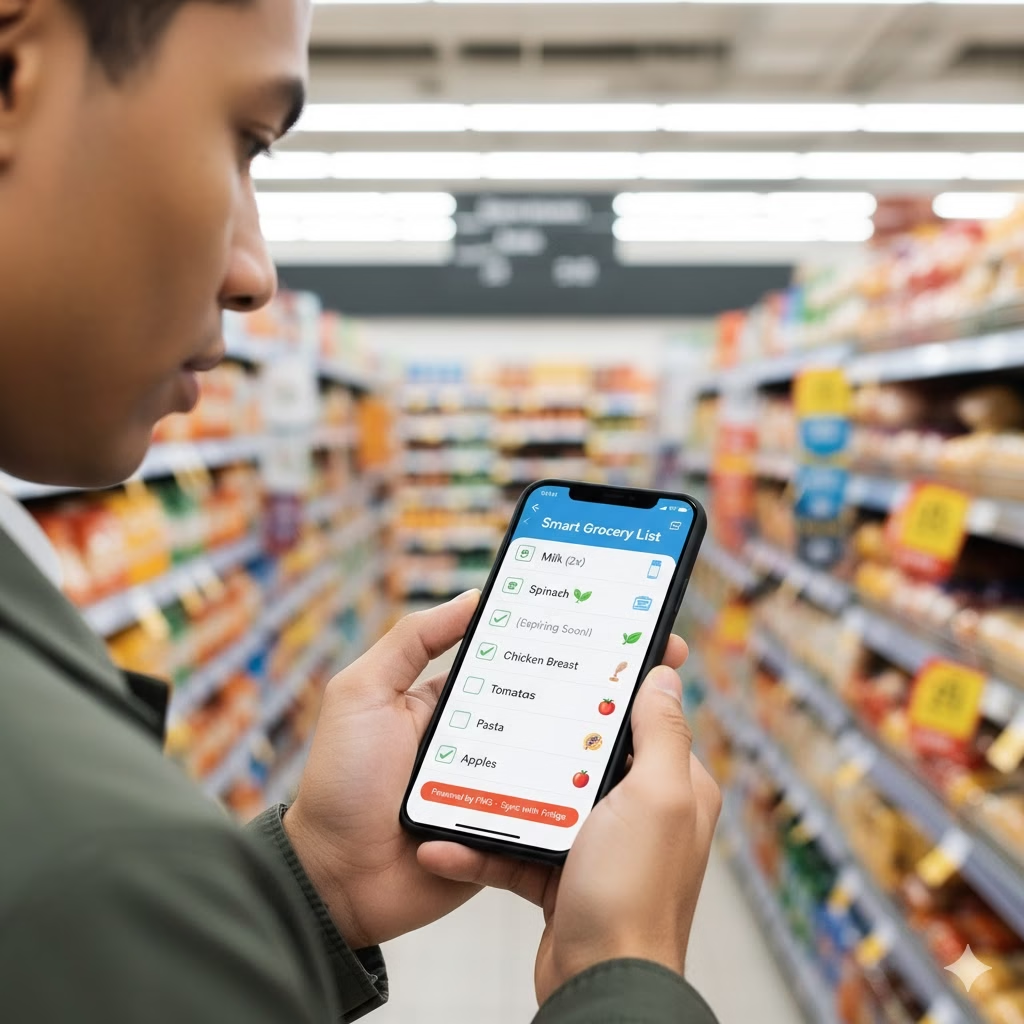
An FMS can make your appliances themselves more sustainable.
- Smart Cooling: Some systems learn when you open the door the most. Then they can adjust how they cool to save power. They might cool more just before you need it. They might use less power late at night.
- Door Alarms: This is simple but great. The system tells you right away if the fridge door is left open. This stops power loss and food from going bad.
- Future Maintenance: Soon, these systems could watch the fridge motor. They could warn you of problems early. This stops big breakdowns and means you don’t have to buy a new fridge so fast.
How to do it: If your FMS has power-saving features, make sure it is linked to your smart home. If the door alarm goes off, close the door right away.
4. Eating Better and More Mindfully
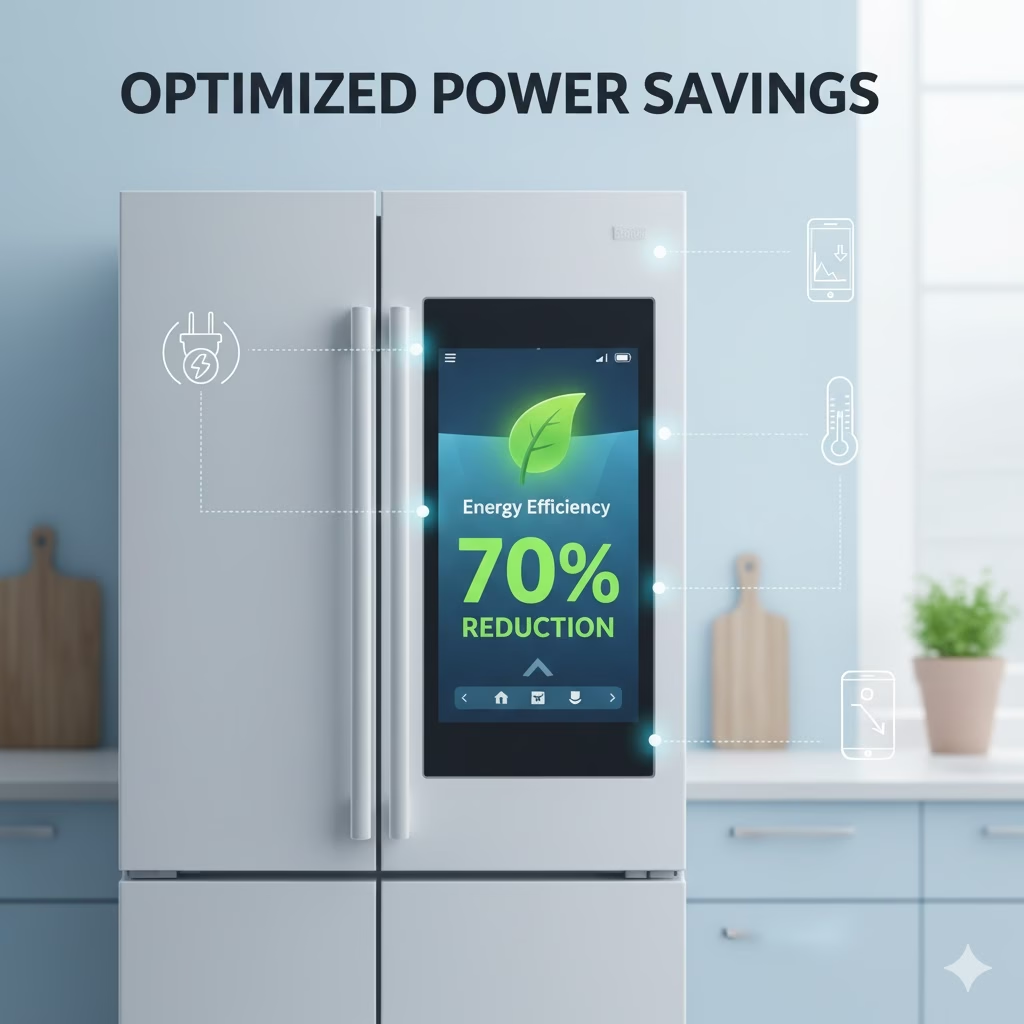
Sustainability is more than just waste. It is also about being aware of what you eat.
- Recipe Help: Many FMS tools suggest recipes. They use the food you already have, especially food that is about to expire. This helps you use what you bought. It also inspires you to try new meals.
- Diet Tracking (Coming Soon): Future FMS tools might link to health apps. They can help you track your food. They can guide you toward healthier choices based on what you have.
- Seeing Habits: The system watches what you use. This teaches you what you eat most and what you waste most. This helps you make changes, like eating less meat and more vegetables.
How to do it: Check the recipe suggestions from your FMS often. Try to cook mainly with food you already own before you buy new items.
How to Set Up and Use a Food Management System
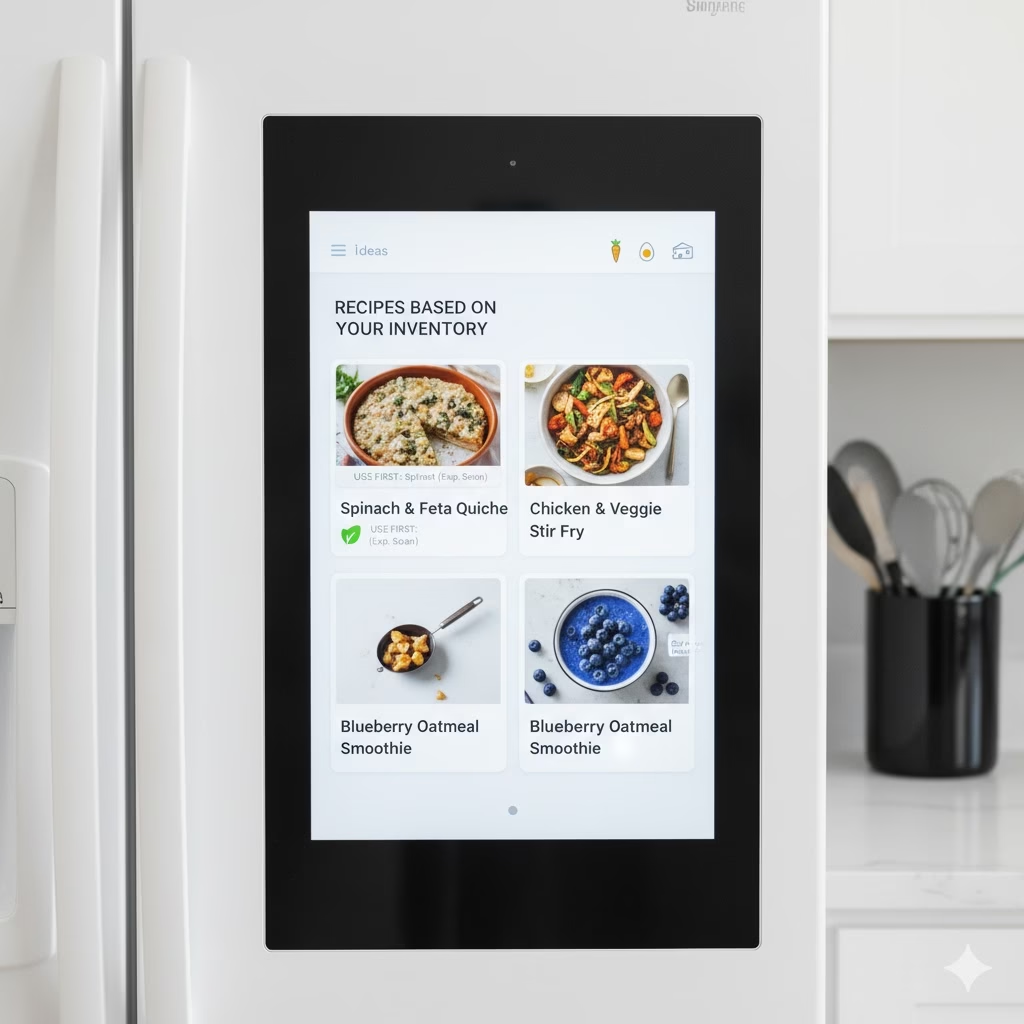
To use an FMS for sustainability, you need to use both technology and new habits.
Step 1: Picking Your Food Management System
This is your first step. Most FMS features are built into smart fridges and freezers. But you can also use simple apps to track your food.
- Built-in Smart Refrigerators: Brands like Samsung (Family Hub) and LG (InstaView ThinQ) have cameras, screens, and AI food tracking built in.
- Good Points: It works perfectly, often has recipes and calendar features.
- Bad Points: Very high cost, only works with one appliance.
Simple Tracking Apps: Apps like Fridgely or NoWaste are manual. They can be your FMS.
- Good Points: Very low cost or free, works with any fridge, you can change the settings easily.
- Bad Points: You have to type in every item yourself, no automatic tracking.
- Example: You buy apples. You open the Fridgely app. You type in “Apples,” the count, and the likely best-by date. The app will remind you later.
How to do it: If you are buying a new fridge, check the smart models. If you don’t need a new fridge, download a few tracking apps. Find one that is easy for you to use.
Step 2: The First Setup and Food List
Once you have your system, you must add all your food to it.
- For Smart Fridges with Cameras:
- Clean First: Clean out your fridge and pantry completely. Throw out old food safely. Start with an empty slate.
- Add Items: When you put new food in the fridge, the system will try to see it with the camera. Or it will ask you to type in the item on the screen.
- Check and Label: Look at what the system found. Add expiration dates for fresh food.
- For Manual Apps:
- Type Everything In: Go through your fridge, freezer, and pantry. One by one, type every item into your app. Add the amount and the best-by date.
- Group Items: Use the app’s groups (like produce, meat, dairy) to find things easily.
- Be Clear: Typing “Yogurt” is okay, but “Greek Yogurt, Plain, 16oz” is much better for tracking.
How to do it: Set aside a few hours for the first setup. It takes effort now, but it will save you time later. Get your family to help you so everyone knows how to use it.
Step 3: Use the System Every Day
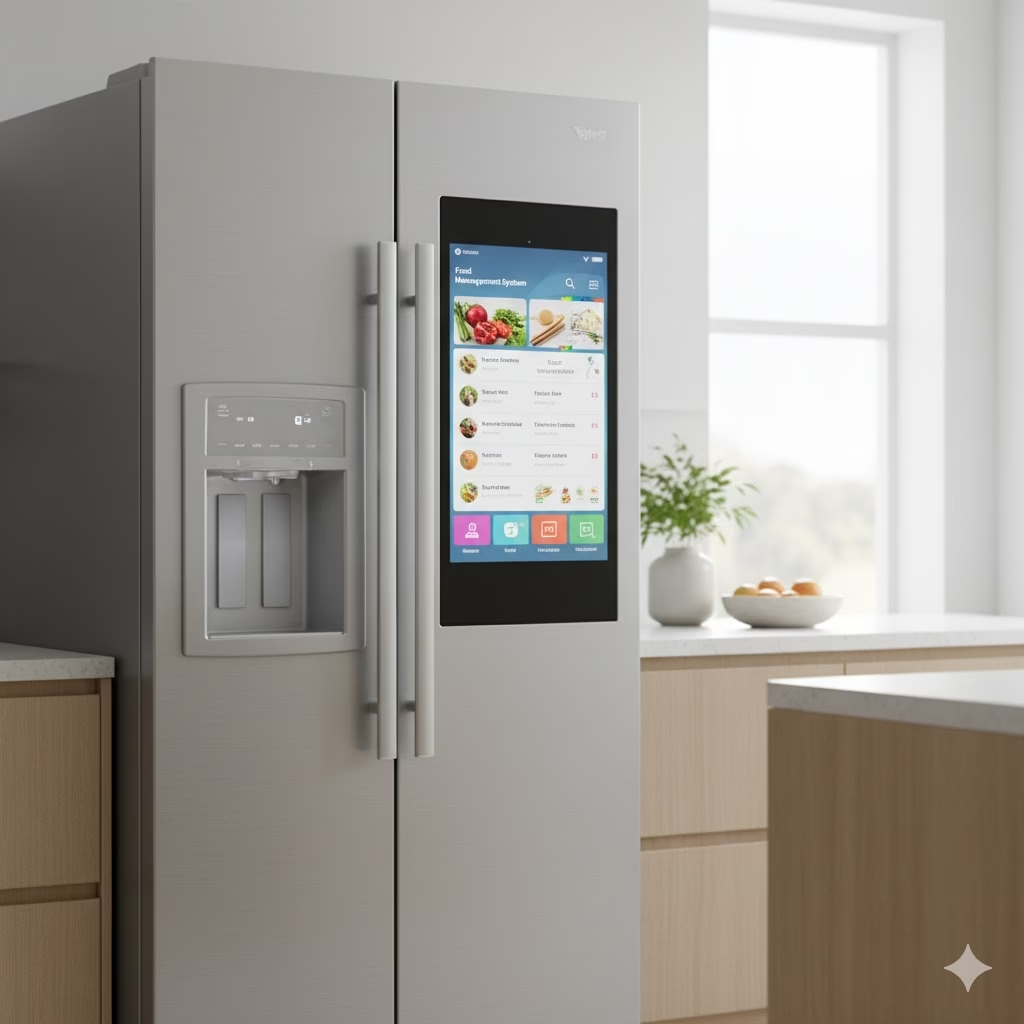
This is the most important part. This is how you create good, sustainable habits.
- Track In, Track Out: This is the most important rule. When you buy groceries, update your system. When you use an item to cook, mark it as “used.” Smart fridges do some of this automatically. Manual apps need you to do it every time.
- Example (Smart Fridge): You take the milk. The camera sees it is gone. If it’s the last drop, the system might ask if you want to add it to your shopping list.
- Example (Manual App): You finish a box of pasta. You open your app, find “Pasta,” and mark it as “consumed.”
- Check Often: Set a reminder to check your FMS every week. Look for food that will expire soon.
- Plan Meals: “The spinach is bad in 2 days. I will make an egg bake tomorrow and a smoothie the next day.”
- Use or Freeze: If you cannot use fresh food in time, freeze it. You can freeze vegetables or turn old fruit into smoothies.
- Plan Meals with the FMS: Use your food list as the main guide for your weekly meals. What do you have to use? Then, you only buy the missing items.
How to do it: Use the FMS as part of your normal kitchen routine. Look at the system before you cook. Look at it before you shop. You need to be consistent to get the best results for sustainability.
Overcoming Challenges
Food Management Systems are great, but they can be tricky at first:
- Takes Time at First: Learning a new system takes time. Stick with it!
- Not Always Perfect: AI can struggle to tell different types of greens apart. You may have to fix the list yourself.
- Needs Barcodes: Many systems need barcodes. Fresh food without a package needs you to type the name in yourself.
How to do it: Don’t try to track everything at once. Start with the food you waste the most. Check the privacy settings to see how your data is used.
The Future of Food Management and Sustainability
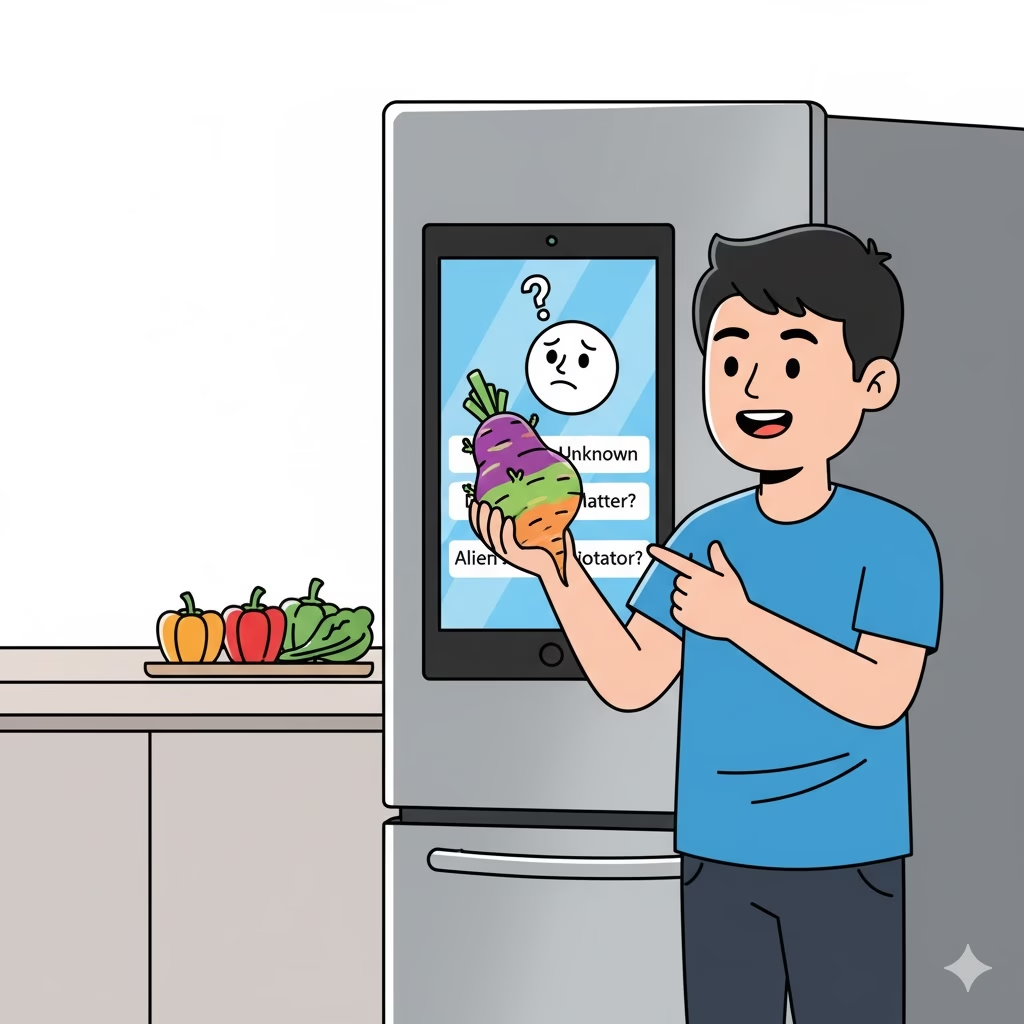
This technology is always getting better. We can expect to see:
- Smarter AI: The AI will be better at knowing food without packages. It will be better at guessing how long food will last.
- Health Links: The system will link to health apps. It will suggest healthy food choices based on what you have.
- Sustainability Scores: An FMS might give you a score. It will tell you how well you are doing at saving power and reducing waste.
- Automatic Shopping: Direct links to online stores. The system will order main foods when you run out. This saves you more time.
- Full Home Tracking: The system will move past the fridge to track all the food in your kitchen.
Imagine a kitchen that helps you eat well, never waste food, and save the planet. All without any effort. This future is close. The Food Management System is the start.
By using this technology, we move past just storing food. We start managing it smartly. We make our kitchens more efficient and sustainable. The path to a smarter, zero-waste home starts with knowing what is in your fridge.
Frequently Asked Questions (FAQ)
Q1: What is the main benefit of a Food Management System for sustainability?
A1: The biggest help is cutting down food waste. It gives you a live list of your food. And tracks when food expires. It suggests meals using the food you already have.
Q2: Are Food Management Systems expensive?
A2: Smart fridges with a built-in FMS are high-cost items. But simple food tracking apps are free or cheap. This means everyone can use the technology.
Q3: How much effort do I need to use a Food Management System?
A3: You need time for the first setup and learning. You need to update the list regularly. But the time you save from better shopping and meal planning is much more than the effort you put in.
Q4: Can a Food Management System help me save money?
A4: Yes! It stops you from wasting food. And keeps you from buying things twice. It helps you shop better. An FMS will save you a lot of money on groceries over time.
Q5: What if my Food Management System doesn’t recognize an item?
A5: You can usually fix this. For smart fridges, you can type in the item on the screen or in the app. For simple apps, you just type it in yourself. This happens most often with fresh food that has no packaging.
Q6: Is my data private with a smart Food Management System?
A6: This depends on the company that made the fridge or app. Always read their rules. Most will let you change settings to control how your data is used.
References
Recent Posts


